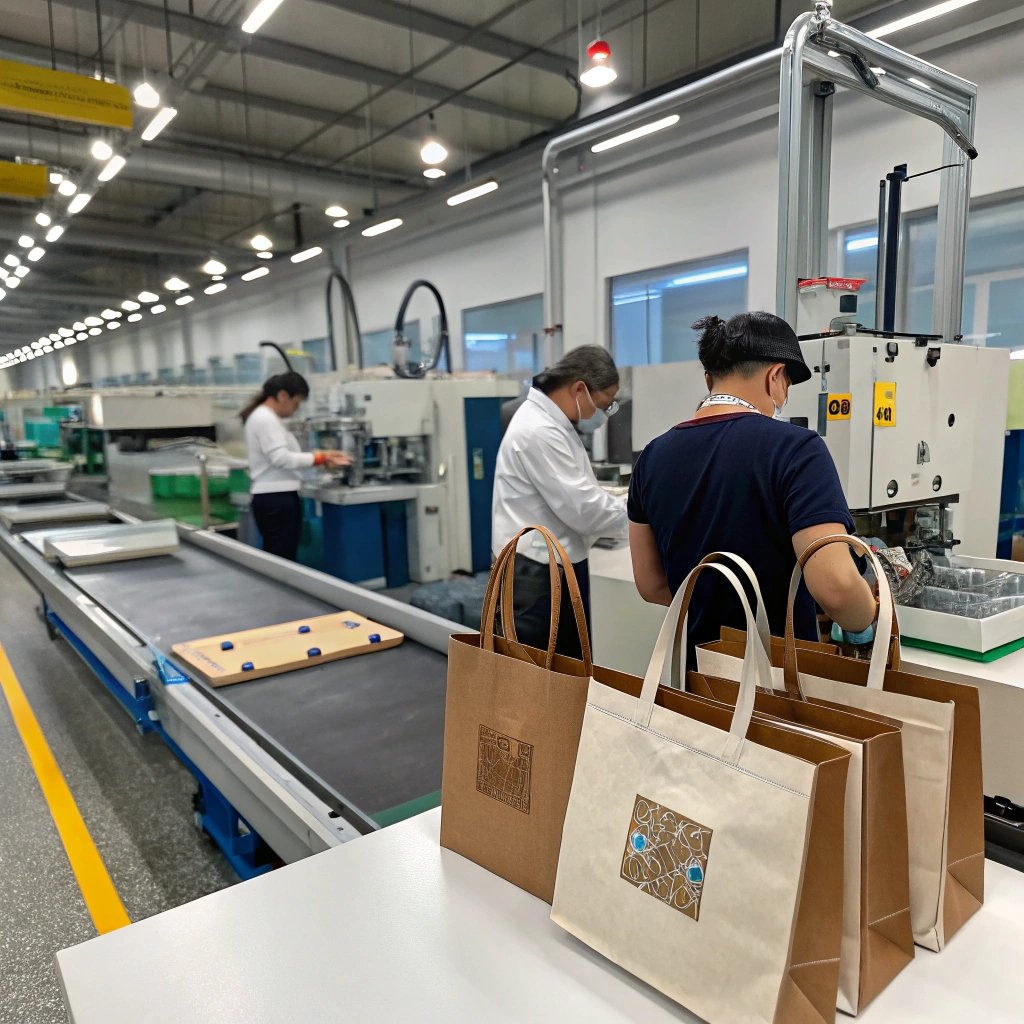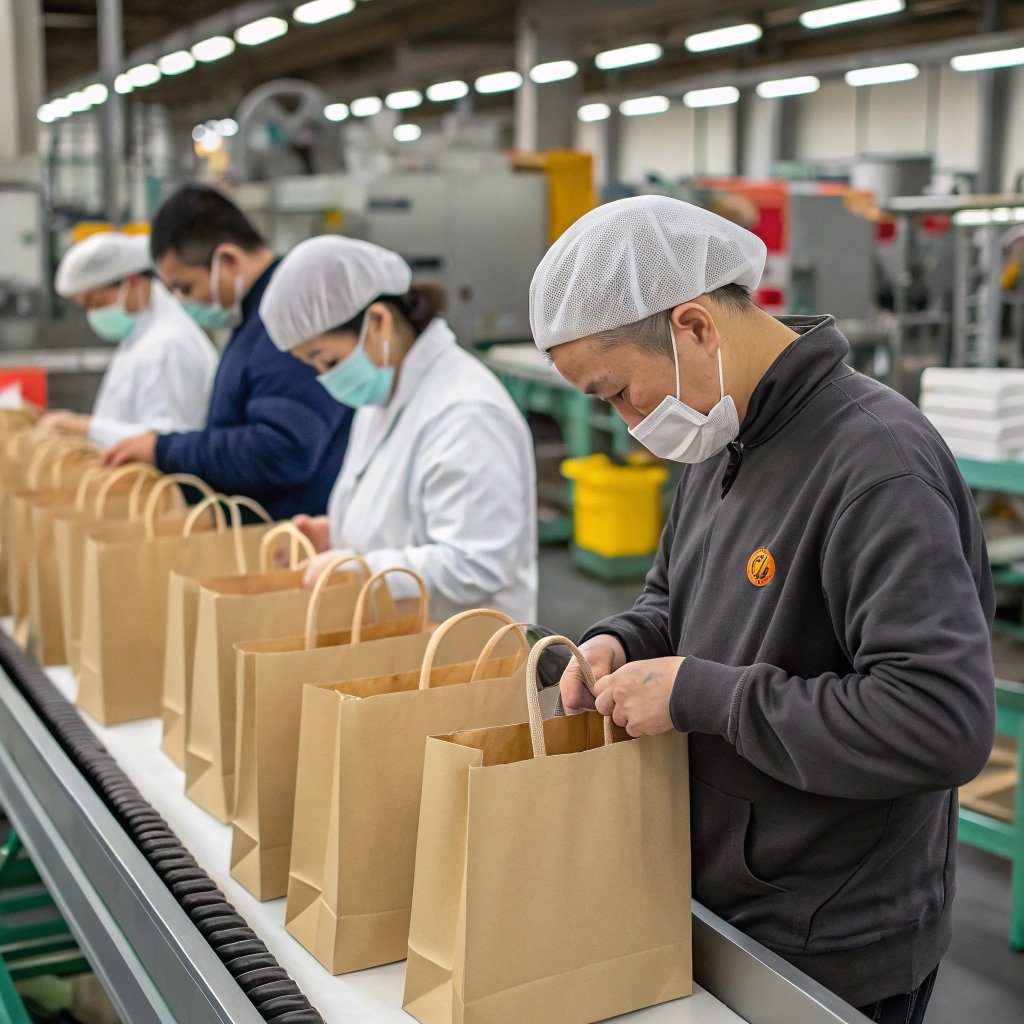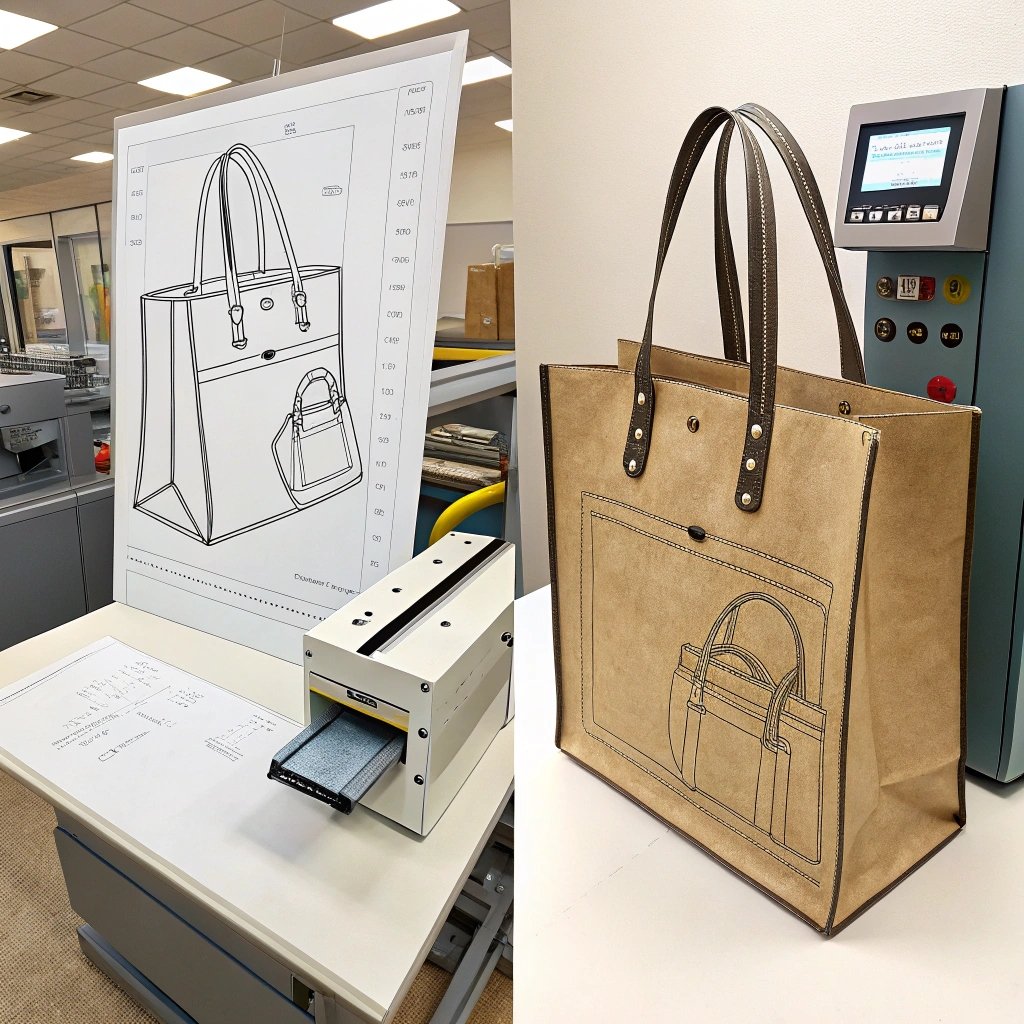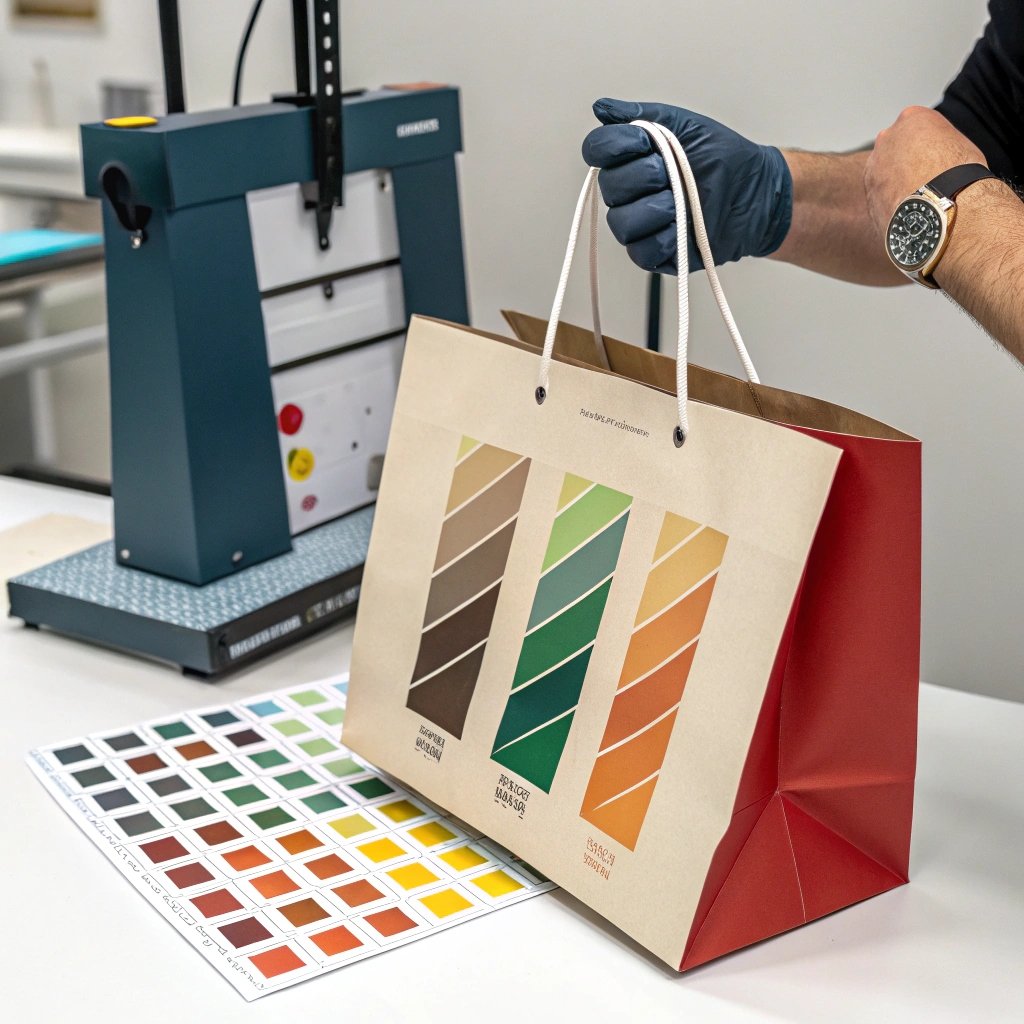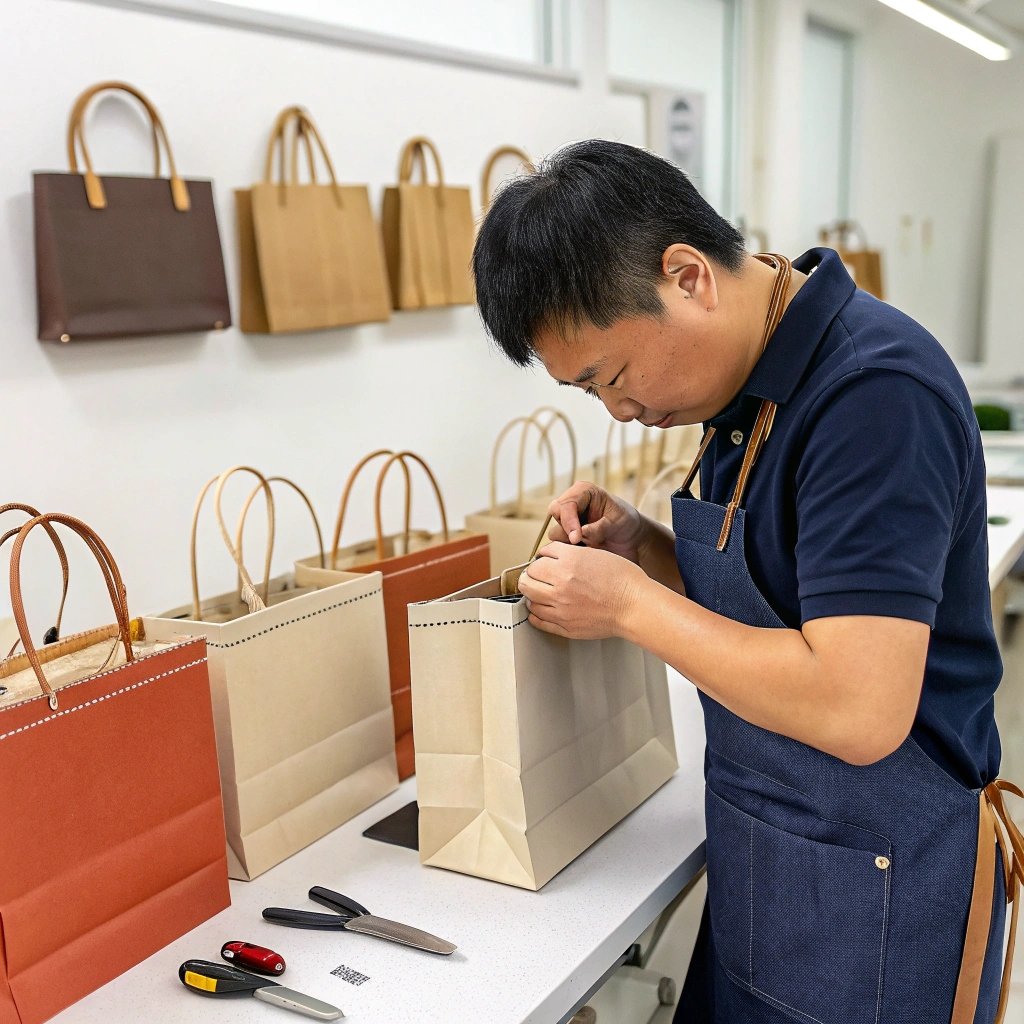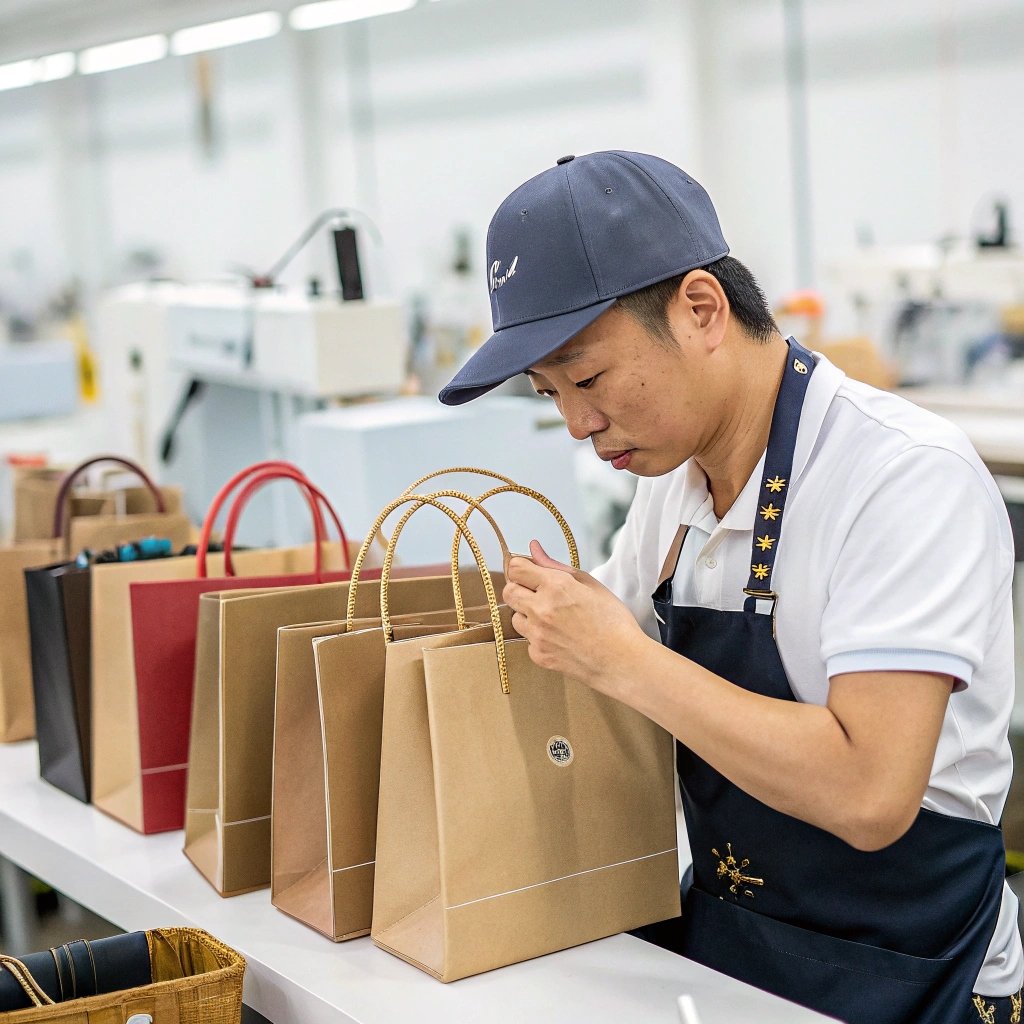You’ve invested time and ideas into your custom shopping bag design—but will the final product really match your vision?
Creating a sample helps you confirm the design, materials1, and branding details before mass production, reducing risks and miscommunication.
Let’s walk through the full sampling process so you can make smarter sourcing decisions and avoid costly surprises.
Why Sampling Matters: Avoid Surprises Before Mass Production?
You’ve finalized your design, sent it off, and waited weeks—only to receive a bag that doesn’t meet your expectations.
Sampling allows you to verify the design, materials, and quality2 before committing to a full production run.
Sampling is more than just a preview. It’s your insurance policy against waste and disappointment. Without sampling, you’re gambling on the unknown. Even if the supplier promises to follow your exact specs, there’s a big gap between what’s said and what’s done. A logo might be too small. A bag might collapse when stood up. A color might be slightly off—and that small difference might ruin a campaign.
I’ve seen clients regret skipping samples. One once ordered 10,000 bags for a supermarket promotion. They didn’t sample first. When the bags arrived, the handle loops were too short and the material too thin to carry groceries. The entire batch was rejected. They lost weeks of sales.
Sampling doesn’t eliminate risk—but it helps identify problems early. It lets you touch, test, and evaluate the real thing. And if something's wrong? You catch it before it’s too late.
| Factor | Sampling | No Sampling |
|---|---|---|
| Risk Level | Low | High |
| Time Cost | Moderate | Low initially |
| Quality Guarantee | Yes | Uncertain |
| Final Satisfaction | High | Varies |
From Concept to Cut: Turning Your Design Into a Physical Sample?
You send a JPEG logo and some rough measurements—can that really turn into a real bag?
Our team uses your design files, dimensions, and ideas3 to create a physical sample using our cutting and sewing equipment.
Creating your sample starts with clarity. We check every file you send—logo formats, dimensions, color codes. If your logo isn’t high-res enough, we ask for better artwork. If your bag dimensions seem inconsistent, we consult you.
Next, we prepare a visual layout. This mockup shows where the logo will go, how big it will be, and how it’ll align with the bag’s features. Once you approve, we move to pattern drafting—our technicians create templates for every piece of the bag: front panel, back panel, sides, bottom gusset, handles.
We then cut the fabric using our digital cutting tools, ensuring precision. The panels are sewn together into a working prototype. This first sample already reveals much—how the bag feels, how it holds shape, and whether your logo sits just right.
This stage is technical, but it's also visual. We take high-res images and videos of the prototype for your review, highlighting all key elements—so you don’t miss any detail before approving.
Material Choices: What We Use and Why It Impacts the Result?
Different materials look, feel, and perform differently—your choice can change the entire outcome.
We offer RPET, non-woven, cotton, canvas, and laminated4 options depending on the use case and budget.
Material is the soul of your bag. It determines how your brand feels in the hand. RPET (recycled PET) is a top choice for eco-conscious brands. It’s made from plastic bottles, printable, and durable. Non-woven polypropylene is cheaper and lightweight—great for quick-use giveaways but less premium.
Cotton and canvas have higher cost but higher impact. Cotton is soft and natural-looking. Canvas is stronger, with a high-end feel. Both are great for lifestyle or fashion brands. Laminated materials, either glossy or matte, are wipe-clean and waterproof—perfect for groceries or heavy-use bags.
When choosing material, we test for:
- Weight (GSM)
- Stretch resistance
- Print absorption
- Color retention
- Eco certifications
Here’s a basic guide:
| Material | Features | Ideal Use Case |
|---|---|---|
| RPET | Eco-friendly, printable | Promotional, brand campaigns |
| Non-woven | Lightweight, low-cost | Giveaways, events |
| Cotton | Durable, soft texture | Daily use, retail bags |
| Canvas | Heavy-duty, upscale feel | Boutique stores, gift bags |
| Laminated | Waterproof, glossy or matte | Grocery, supermarkets |
The right material supports your goals. Sampling helps you feel and test it before scaling up.
Printing & Logo Testing: Ensuring Brand Colors Are Spot-On?
Your logo is your identity—will it look vibrant or dull on the final bag?
We test multiple printing methods5 to ensure your logo and colors are accurate and lasting.
Brand color consistency matters. Even a slight shift in hue can throw off a campaign. That’s why we test your logo on actual material using different methods:
- Screen printing: best for bold, solid colors.
- Heat transfer: works for gradients and photos.
- Digital printing: ideal for full-color artwork on short runs.
We send you actual samples on fabric—not just printed paper. You’ll see how your Pantone code looks when printed on cotton vs. canvas, or RPET vs. laminated film. Some colors absorb differently. We also test durability—rubbing the print, washing the fabric, stretching the logo area.
You get comparison shots with notes on how close we got to your brand color. We keep adjusting until it’s right. That’s the point of testing—no assumptions, just real results.
| Method | Best For | Pros | Cons |
|---|---|---|---|
| Silk Screen | Simple logos, bold colors | Durable, vibrant | Not great for complex logos |
| Heat Transfer | Gradient or detailed graphics | High detail, good resolution | May peel over time |
| Digital Print | Full color, small runs | Fast, flexible | Higher cost per unit |
Stitching, Finishing & Quality Check: Small Details, Big Impact?
Your logo looks great—but what about loose threads or weak handles?
We inspect every sample by hand to confirm stitching strength, symmetry, and overall finish6 before approval.
Quality shows in the small things. We pull the handles, measure every seam, and fold/unfold the sample to test structure. Loose threads? Unacceptable. Misaligned corners? We correct them.
We check for:
- Stitch count per inch
- Reinforced stress points
- Seam straightness
- Handle load tests (up to 10kg)
- Fabric edge sealing
We take photos, record videos, and create inspection checklists. All of this is shared with you before you approve the final sample. If it doesn’t pass our internal review, we don’t even send it—we fix it first.
| Detail Checked | What We Look For |
|---|---|
| Handle Strength | Weight test with 5-10kg |
| Stitching | Even spacing, no loose threads |
| Corners & Edges | Clean folds, no fabric fray |
| Logo Print Quality | No smudging, consistent color |
| Shape Retention | Bag stands up or folds neatly |
Revisions & Feedback: How You Can Perfect the Sample Before Approval?
You get the sample—but want the handles longer or the logo 1cm higher?
We revise your sample based on your feedback before moving to full production7.
Revisions are expected. Many clients request changes after the first sample. You might want to:
- Adjust logo size or placement
- Change material
- Add a zipper or inner pocket
- Modify handle length or type
We log all changes and create a new version. Small changes take 2–3 days; bigger structural changes might take a week. Nothing goes to production until you say yes.
| Type of Revision | Common Examples | Turnaround Time |
|---|---|---|
| Design Adjustment | Logo size, position, bag dimensions | 2–3 days |
| Material Change | Switch to thicker RPET or canvas | 3–5 days |
| Color Matching Tweak | Pantone fine-tuning | 2–4 days |
| Structural Change | Handle type or base design | 4–6 days |
This ensures your final product is exactly what you imagined.
Real Samples, Real Clients: Success Stories from Past Orders?
How do other buyers like you use our sample service to succeed?
Many of our long-term clients first started with a single sample—and now order thousands with confidence.
Let’s talk about Mike from Canada. He runs a promo product business. He needed character-themed shopping bags for a grocery brand. We produced one RPET sample with heat transfer print. The logo was too low at first—he caught it, and we fixed it. After two revisions, he approved and ordered 20,000 pieces.
Another client from Singapore needed cotton totes with long handles for a hotel chain. The first sample used standard handles—but hotel guests wanted to carry bags over their shoulders. We revised, re-sewed, and re-sent in 4 days. Result? 10,000 bags, all delivered before their promotional deadline.
Real clients, real success—all thanks to sampling.
Conclusion
Sampling ensures design, color, material, and quality are perfect before mass production, saving time, cost, and brand reputation.
-
Understand how each bag material affects durability, weight, and look for your target use. ↩
-
Know why material and quality checks are critical before full production to avoid losses. ↩
-
Learn how your files and specs are transformed into an actual prototype sample. ↩
-
Explore how different materials suit different branding goals and budget needs. ↩
-
Compare various printing techniques to ensure brand color accuracy and durability. ↩
-
Discover how finishing checks catch issues in stitching, handle strength, and edge quality. ↩
-
See how feedback loops and revisions perfect your sample before production starts. ↩

